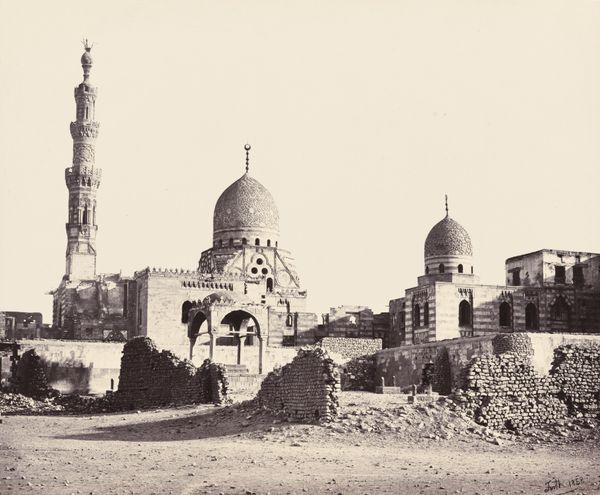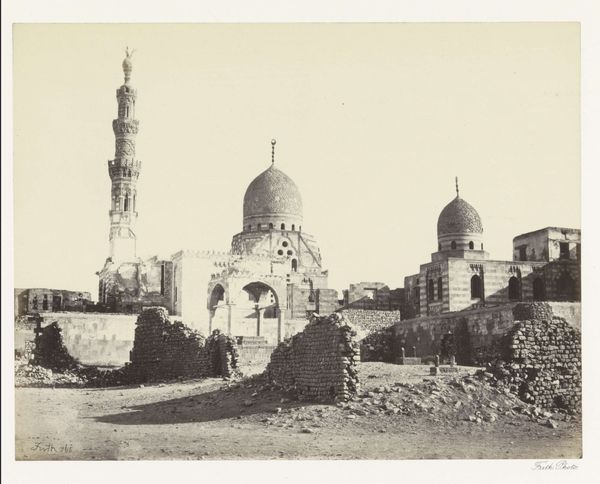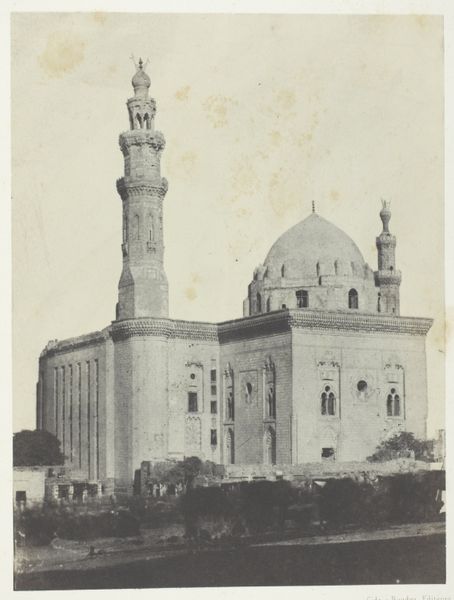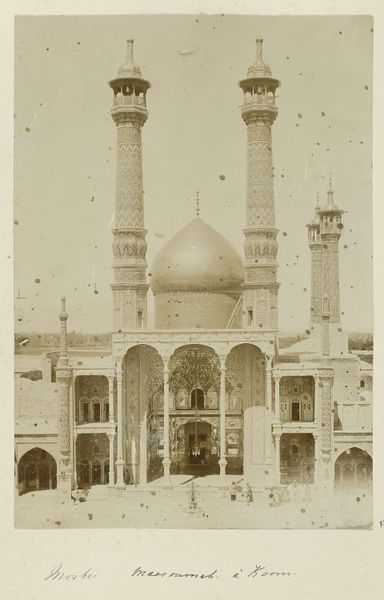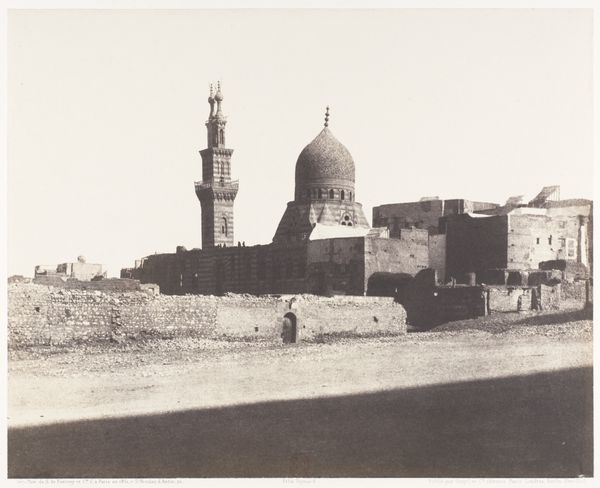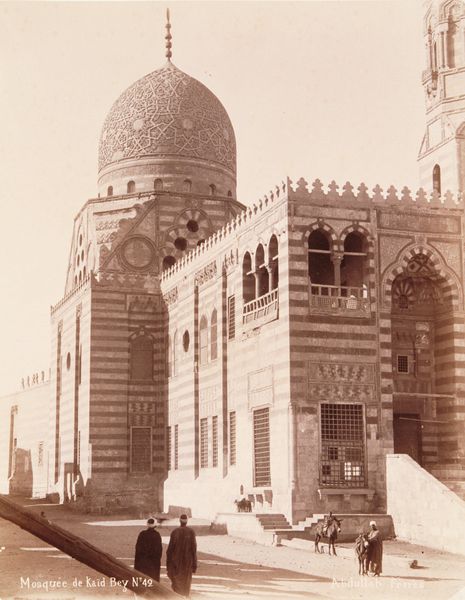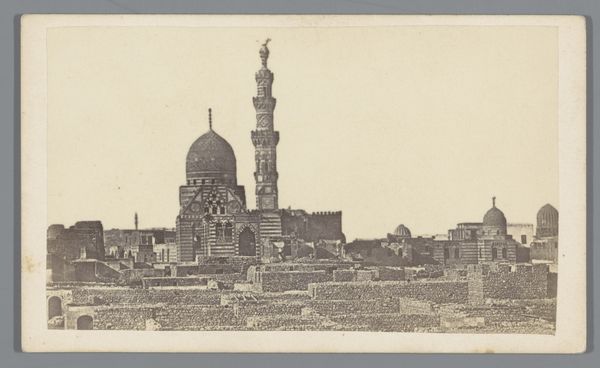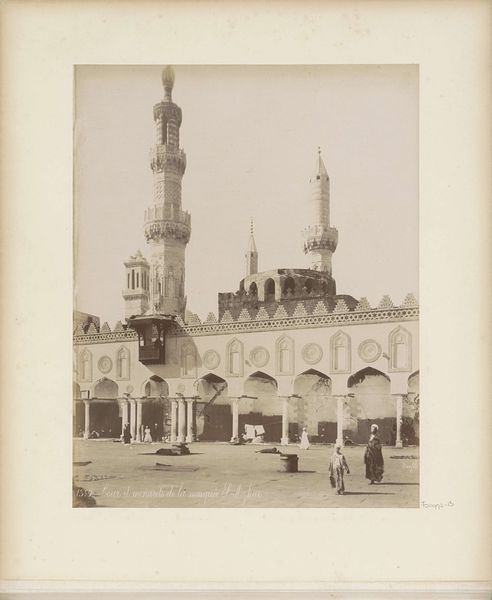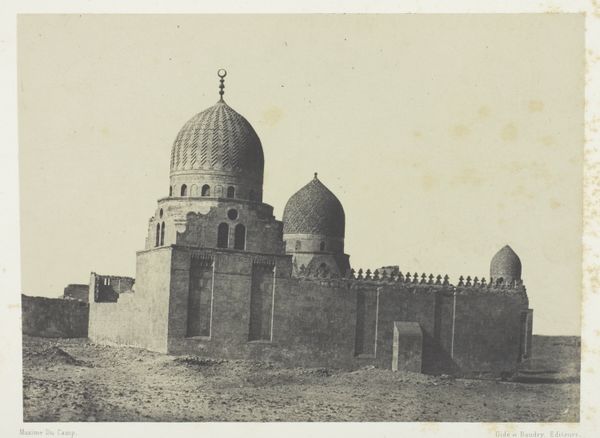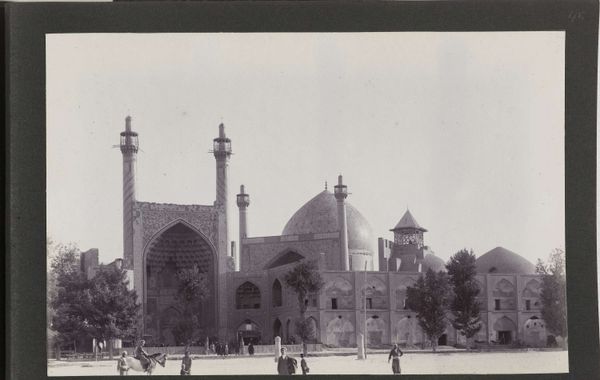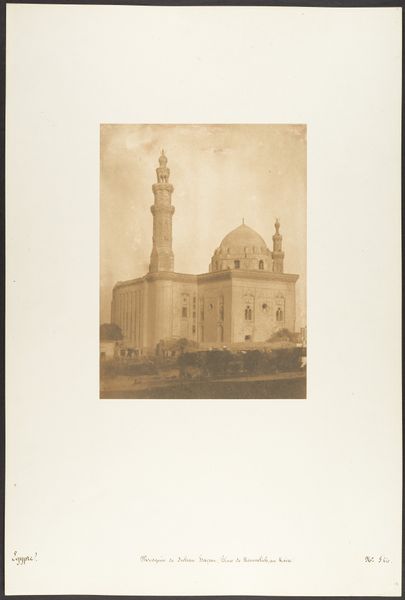
Le Kaire, Mosquée du Sultan Haçan (le Tombeau) 1851 - 1852
0:00
0:00
photography, albumen-print
#
landscape
#
outdoor photograph
#
outdoor photography
#
photography
#
historical photography
#
outdoor scenery
#
orientalism
#
cityscape
#
islamic-art
#
albumen-print
Dimensions: 25.2 x 30.5 cm. (9 15/16 x 12 in.)
Copyright: Public Domain
Curator: Here we have Félix Teynard's photograph, "Le Kaire, Mosquée du Sultan Haçan (le Tombeau)", taken between 1851 and 1852. This albumen print captures the majestic Sultan Hassan Mosque in Cairo. Editor: My first impression is one of austere grandeur. The sepia tones lend it an almost dreamlike quality, while the sharp lines of the architecture impose a certain monumentality. Curator: Absolutely. Teynard's genius lies in capturing the monument’s sheer structural integrity. Observe how the geometric purity of the dome and minarets contrast with the ruined foreground. The interplay between light and shadow is meticulously crafted to highlight the formal components of the structure. Editor: For me, it’s more about the enduring symbols of Islamic power and faith. The minarets, of course, speak to the call to prayer, to spiritual elevation. The dome evokes celestial harmony. There's a sense of timelessness here; of history etched in stone. Even the “ruined foreground,” as you call it, contributes, symbolizing the ephemeral nature of earthly power contrasted against divine permanence. Curator: I see your point, but consider also how Teynard has deliberately framed the composition to draw the eye upward, accentuating the vertical thrust of the minarets and the subtle curvature of the dome. It’s a lesson in perspective, forcing us to confront the artwork's physical presence and its spatial relationship. Editor: The symmetry also speaks to an ideal of balance, a concept so central to Islamic art and philosophy. We must also consider Teynard’s position as an outsider looking in, how his gaze shapes the narrative. Perhaps the "ruins" signal more about western attitudes toward the East in the mid-19th century. Curator: True, Orientalism infuses much of the photographic practice of the period. I hadn't quite considered that framing so explicitly! It appears the cultural understanding deepens the appreciation for its geometric essence. Editor: Indeed. These layers are what keep the photograph resonating long after its creation. Thank you for highlighting aspects that reveal structure but conceal deep symbolism, an often overlooked component of visual analysis.
Comments
No comments
Be the first to comment and join the conversation on the ultimate creative platform.


